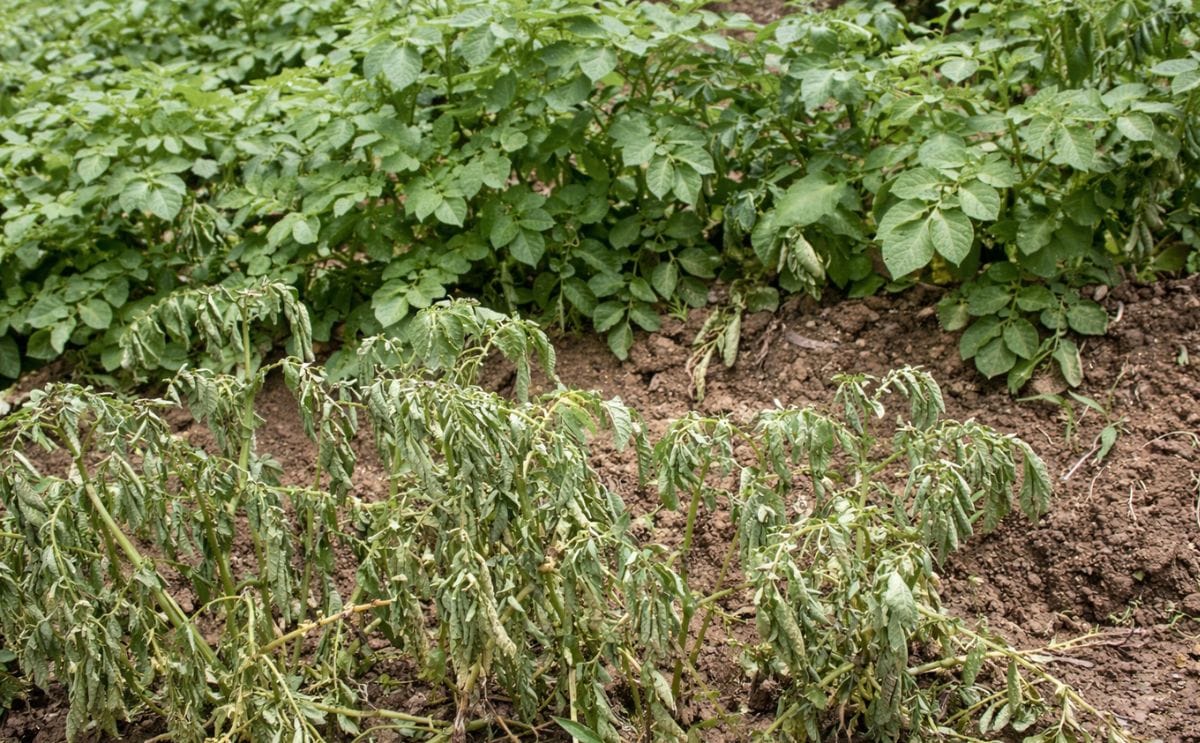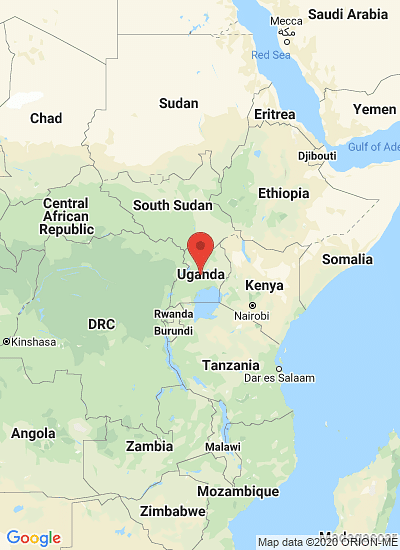Potato Plants with Bacterial Wilt symptoms (Courtesy: International Potato Center)
Solapas principales
Scientists work to save the Irish potato in Kabale, Uganda

The potato (Irish) that has fed the people of southwestern Uganda (Kabale) for generations is being threatened by several pests and diseases, including the potato bacterial wilt. These are affecting potato production as plants dry up or produce small tubers.
Abel Arinaitwe, a plant pathologist at Kachwekano Zonal Agricultural Research & Development Institute (KAZARDI) located 8km from Kabale town, says the potato bacterial wilt makes the plant sag. He discloses that this can be transmitted through infected seeds and soils, especially during the rainy season.
KAZARDI is one of the 14 institutes of the National Agricultural Research and Organisation (NARO) spread across the country. It spearheads research and development programmes aimed at increasing agricultural production in the southwestern highland agro-ecological zone.
Arinaitwe says they import new varieties from South America, the epicentre of potatoes. The varieties are then cross-pollinated to get varieties that can adapt to conditions in Uganda. This process is what is termed as conventional. Sometimes, a system called tissue culture is used to multiply the new potato plants, which are then used to generate the seed potato.
Potato planting material referred to as ‘clean seed’ are free of pests and diseases. Agriculturists say this is the first step in getting good yields. At KAZARDI, clean seeds are produced in partnership with an association of farmers called the Uganda National Seed Potato Producers Association (UNSPPA). Other farmers with interest in seed potato multiplication are being trained by KAZARDI, with sponsorship from ASERECA and other donors.
Production of quality/clean seed potato that is free of pests and diseases starts at KAZARDI. At the institute, small plantlets are grown in test tubes and later transplanted in clean soil in a screen house to produce small tubers called minitubers.
This technique has of recent been improved with the help of the International Potato Centre, which enabled KAZARDI to build a special screen house that allows the minitubers to be produced without soil. The plantlets from the lab are planted in raised and darkened boxes, whereby roots hang in the dark air space. Nutrients to support plant growth are supplied in form of liquid.
This is known as aeroponic production of clean seed potato, and it produces much more tubers from one plant compared to those grown in soil. It minimises soil-borne diseases and seed degeneration and, hence, increases seed and ware potato productivity.
Like other seed tubers, mini-tubers are allowed two to three months to sprout and then planted in a field at Kalengyere Station, which has suitable conditions for generation of pre-basic seed that is also planted in another season to produce foundation/basic seed.
It is the basic seed that is availed to UNSPPA or its equivalent farmers for growing it once more to produce commercial seed potato that is availed for ware potato farmers.






